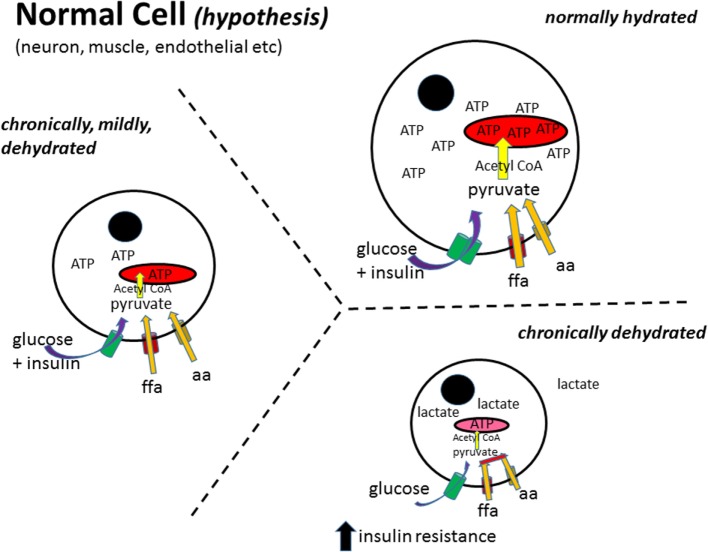Figure 2.
Normal cell metabolism (hypothesis). In a normally hydrated (euhydrated) cell, all substrates are taken up by their appropriate transporter mechanisms and enzymatically converted to pyruvate, transported into the mitochondria, converted to acetyl-CoA, which then enters the tricarboxylic acid cycle to generate ATP (82). As the cell gets more and more dehydrated, the metabolism of free fatty acids (ffa) and amino acids (aa) to pyruvate and/or acetyl-CoA decreases producing a dependence on glucose as the main fuel source [as has been reported for obesity (16)]. Furthermore, as the cell decreases in size, the ability of insulin to stimulate glucose uptake decreases, leading to insulin resistance. Black circle, cell nucleus; red structure, mitochondria; ffa, free fatty acid; aa, amino acid.

